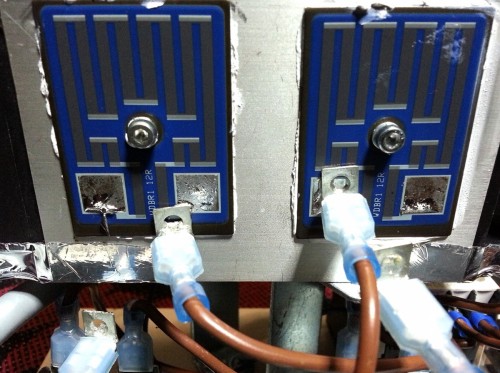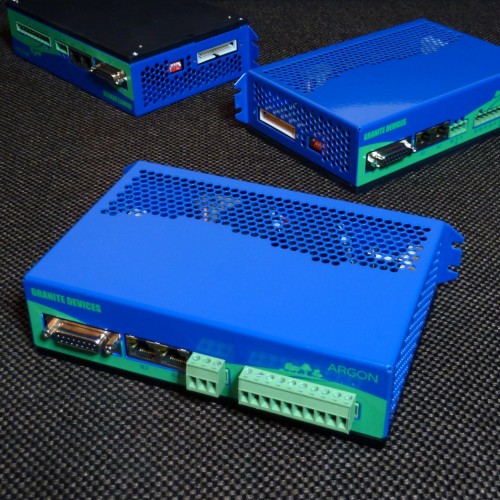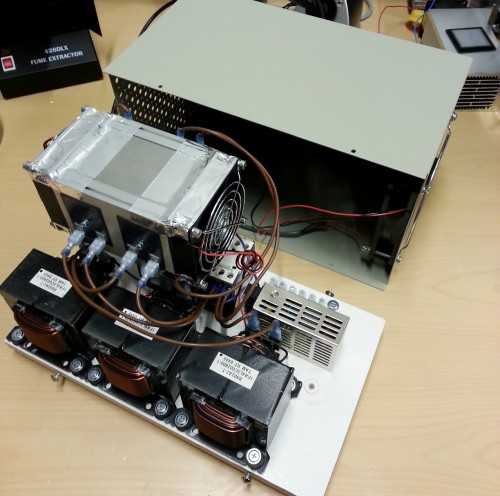Lately I have been concentrating on finding the current & power limits of the Argon drive. I have used the artificial load unit as test load.
Testing has gone well and has revealed things I didn’t know about Argon. The most positive surprise is that the drive seems to be able to deliver a lot more continuous power than calculated. The first anticipated limiting factor in the design was the equivalent series resistance (ESR) of the bulk capacitors. ESR sets the limit to the maximum ripple current that AC-to-DC power supply can handle because current flowing through capacitor’s internal resistance will heat them up and eventually make them reach their maximum safe temperature.
By calculating maximum ripple current & power based on capacitor specs I came up with figure of 700W continuous power before capacitors get too hot (105⁰C). However, by testing I found out that even at 1200W continuous output the caps didn’t get warmer than 37⁰C. I think capacitors either are way better than specified or their ESR is specified at 105⁰C which may be much higher than the ESR in room temperature. So 700W is probably the limit when capacitors already run hot (needs very high ambient temperature) and at least 1.2kW may be extracted at room temperature.



